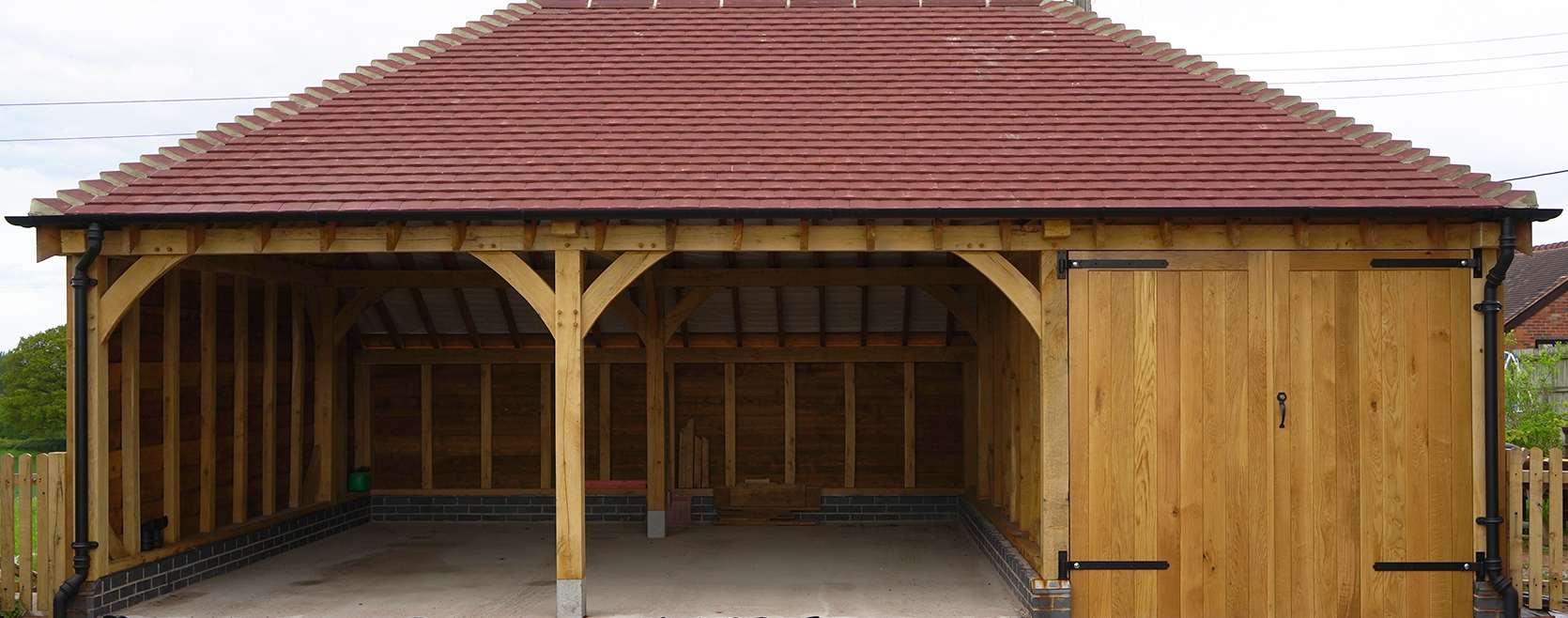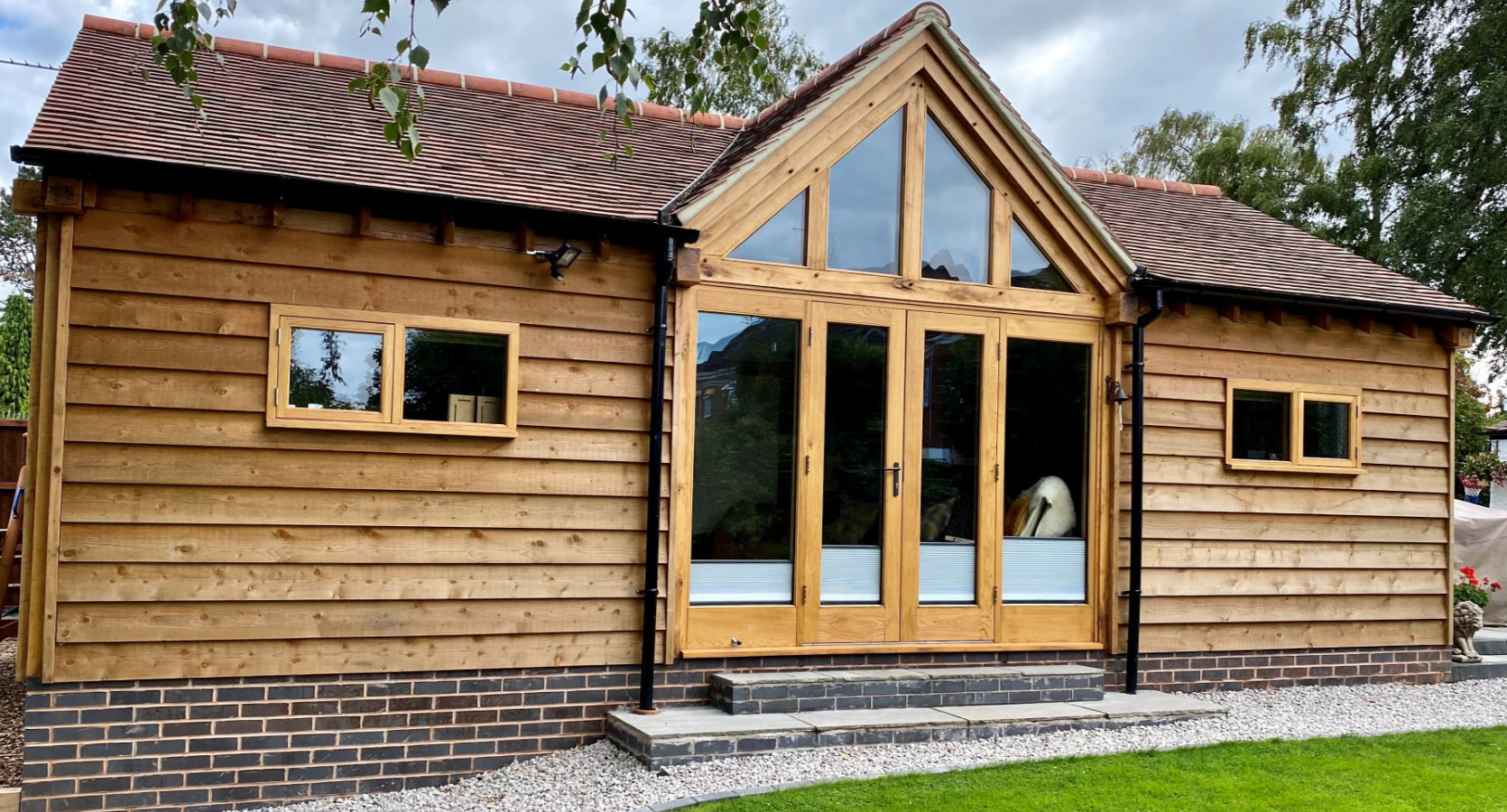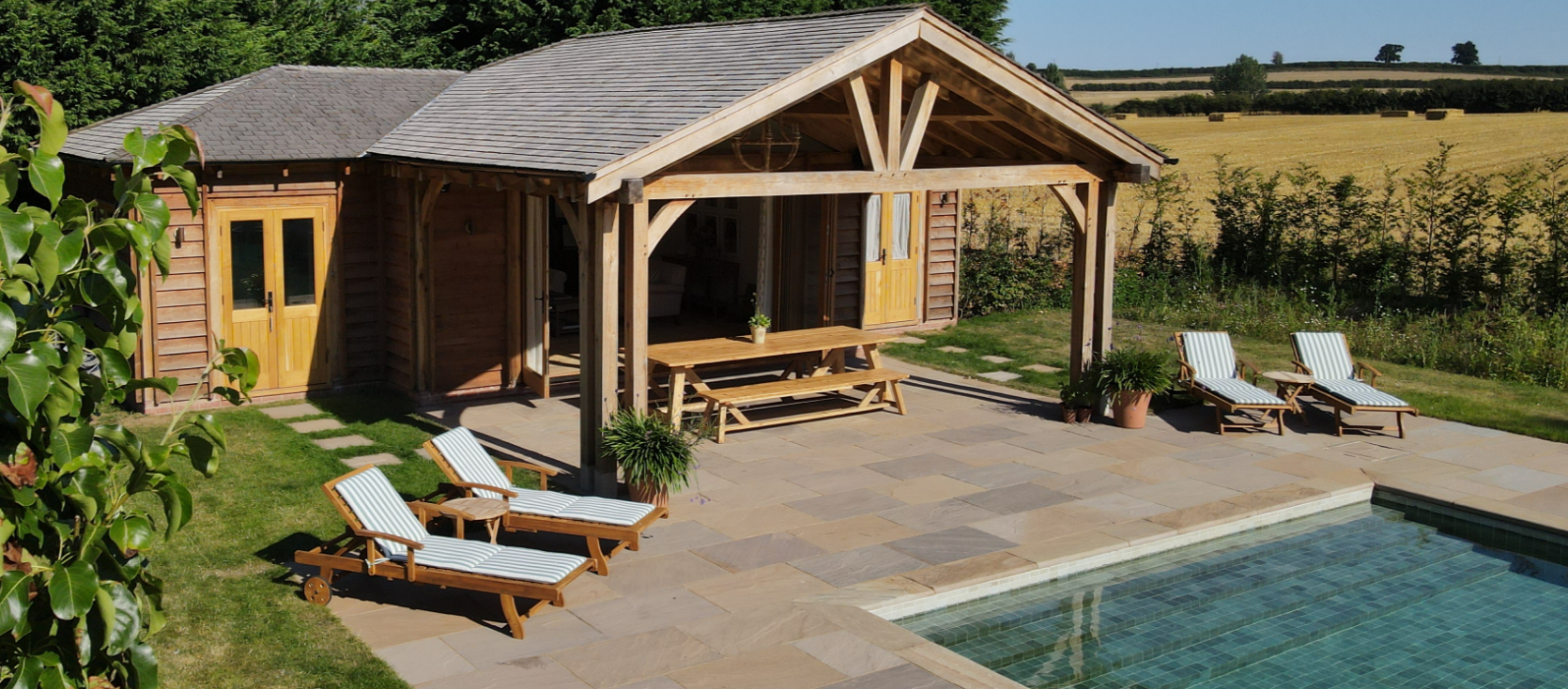The Importance of Oak Treatment
Contents
You may be pleased to know that oak is one of the lowest maintenance materials you can invest in. With a natural resistance to rot, fungal infection, and pests and insects, oak structures can last a lifetime without our interference.
However, some homeowners may choose to treat their oak structures to enhance certain features and properties of the wood; this is perfectly fine, so long as you follow the correct treatment procedures to retain the properties you value.
This is the importance of oak treatment…

Understanding Oak Treatment
Left untreated, oak turns a silvery colour; it can split and crack as it dries; and stains may occur due to watermarks and tannin acid. Whilst this is completely natural and does not affect the integrity of the oak, oak treatments may be used to preserve and enhance certain characteristics.
To treat oak, a preservative, finish, or coating may be applied by hand. The type of treatment will depend on whether the oak is used for an external or internal structure and the characteristics you wish to preserve.
Different Types of Oak Treatment
The different types of oak treatment include: drying processes, preservative treatments, and finishes and coatings.
Seasoning and Drying
Seasoning and drying both refer to the same process of reducing the moisture content in oak prior to its use. Although this initial process is not a treatment which can be completed by homeowners but will be undertaken after the wood has been felled, the oak will continue to dry following installation in your home, and therefore it’s important to familiarise yourself with the drying process.
During the drying process – which happens within the first few years of installation and is catalysed by a central heated environment – the oak will split and crack as it shrinks. This is as the oak goes from a moisture content ranging from 80-60% after felling to 20% and lower. Splits and cracks do not weaken the oak, however, which will actually become stronger as it matures.
To reduce the amount of shrinkage splits, avoid exposing your oak structure to harsh or large sources of heat initially.
Preservative Treatments
Preservative treatments will not necessarily change the appearance of your oak, but are designed to enhance the wood’s natural resistance to water, damp, rot, mildew, blue stain and pests and insects; this may be used where oak is used in external environments or kitchens and bathrooms where there is a higher moisture level.
Preservatives often come in the form of oils and solvent-based formulas which are applied directly to the wood.
Protecting against water is particularly important as when water reacts with the natural tannin found in oak, it can cause blue stain or blackening – discolouring the oak; this may be unsightly to some homeowners. If the blackening has already occurred, then it can be instead treated with a fungicidal wash.

Finishes and Coatings
Finishes and coatings range from paints, stains, waxes and varnishes. The purpose of finishes and coatings are to enhance or change the look of the oak; unless it is supplemented with a preservative, it will not protect the oak against insects, pests, and rot however will offer a barrier against water penetration.
Prolonged exposure in the sun, will mean that oak structures will benefit from UV protection oil. This shields the oak from UV rays and prevents the oak from silvering.
Before treating your oak with a finish or coating, make sure you have tested it to see how the treatment dries. This can be done on an off-cut of the same material.
If you’re looking to use a finish or coating on wood in an outdoor environment, it will often require a new application every 3-5 years as the coating wears off and weathers.
Maintaining and Caring for Treated Oak Structures
To ensure your oak structure is as healthy as it can be, you can do a couple of things.
Firstly, ensure your oak is kept clean – remove dirt and mud which may build up on the structure especially if it is used outdoors. Along the same lines, avoid your oak structure sitting in water for prolonged periods of time, for example, rainwater puddling around it. You can also sandpaper off any chips or dents caused in the wood if required to keep it smooth.
And finally, if you’re treating your oak with a finishing or coat, make sure to remove any old layers with sandpaper before you apply a new coat!
There are several ways to treat your oak for peace of mind that your oak structure is as healthy as possible. With that being said, the beauty of oak is that treatment of oak isn't necessary; simply ensure your oak is well cared for and it will continue to thrive for decades to come!
Do your oak structures need treating? Give us a call today, and we can help you out!
